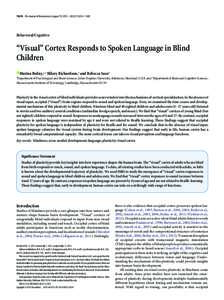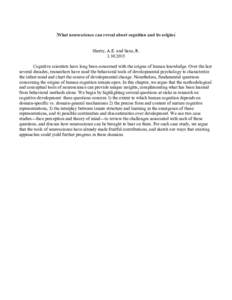<--- Back to Details
| First Page | Document Content | |
|---|---|---|
 Date: 2014-12-30 18:29:03Ethology Anxiety Highly sensitive person Personal development Neuroscience Affect Extraversion and introversion G factor Psychology Mind Personality traits Behavior |
Add to Reading List |
 | MIT Saxelab Research Partnership In order to establish robust tools that can measure the educational impact of virtual exchange, the Saxelab Social Cognitive Neuroscience Laboratory at MIT is engaged in a multi-year iterDocID: 1xUyJ - View Document |
 | 11674 • The Journal of Neuroscience, August 19, 2015 • 35(33):11674 –Behavioral/Cognitive “Visual” Cortex Responds to Spoken Language in Blind ChildrenDocID: 1xUnf - View Document |
 | What neuroscience can reveal about cognition and its origins Skerry, A.E. and Saxe, RCognitive scientists have long been concerned with the origins of human knowledge. Over the last several decades, researcheDocID: 1xT6i - View Document |
PDF DocumentDocID: 1xS2j - View Document | |
PDF DocumentDocID: 1xN0A - View Document |
 Highly Sensitive Person Notes Author’s Note p. AN 1 included a feature in Psychology Today: A. Bartz. “ Touchy! A [Gentle] Guide to the Highly Sensitive Person.,” Psychology Today): 72-79.
Highly Sensitive Person Notes Author’s Note p. AN 1 included a feature in Psychology Today: A. Bartz. “ Touchy! A [Gentle] Guide to the Highly Sensitive Person.,” Psychology Today): 72-79.